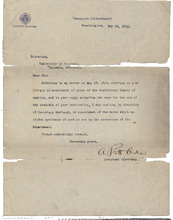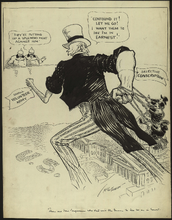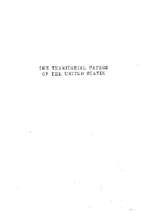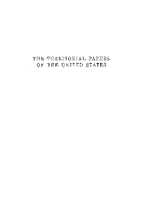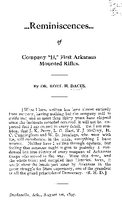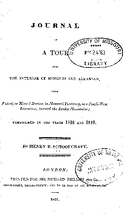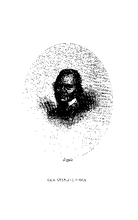JM-149: Conundrum of the California Alien Land Law
The top panel of this cartoon depicts a little girl, "states' rights" crying over the grave of free silver. "Free silver" refers to the concept of the free coinage of silver, which was a popular idea for public policy among populists and other groups. Those in favor of free coinage of silver would argue that it would increase the circulation of currency, which would make wages higher and loan easier to obtain. Those against the free silver policy typically supported the gold standard, which was officially adopted by the United States in 1879. The gold standard limits the coinage of silver and other currency in circulation, because all currency must defined in the value of gold. Proponents of the gold standard argued it stabilized American currency, which allowed business to function. William Jennings Bryan, an influential American politician and Secretary of State (1913-1915), was an outspoken supporter of the free silver policy. In the top panel, William Jennings Bryan is abandoning states rights to go to California. William Jennings Bryan became involved with attempting to block discriminatory legislation against Japanese immigrants in California, such as the California Alien Land Law. This law placed restrictions of Japanese immigrants' legal ability to acquire and own property. Such discriminatory laws created a tense diplomatic relationship with Japan. As Secretary of State, William Jennings Bryan attempted to limit the impact of such legislation to improve relations between the United States and Japan. The idea behind many of these discriminatory laws in seen in the bottom panel. (Summary created by Mary Delano, MU History Intern, Spring 2018)

